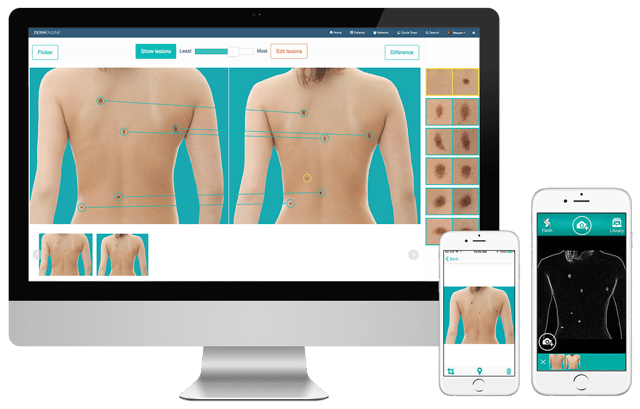As stated previously, studies demonstrate mixed results pointing towards the efficacy of total body photography as a tool to be used for the early detection of skin cancers, with particular interest in high-risk patients (skin cancer history, over age 50, etc.). For example, one study found that the chance of detecting melanoma increased by 17%1 with the use of a digital dermoscope alone. In another, total body imaging was found to improve the detection of melanomas that did not fit standard clinical condition profiles.
However, the American Cancer Society states that there was “insufficient evidence to recommend for or against routine skin screenings for skin cancer”, but goes on to note that the American Cancer Society supports regular skin screenings in addition to general health examinations.2
Benefits of Total Body Photography
Although the accuracy and efficacy of this method are a point of discussion, a wide variety of sources site the early detection of skin cancer, simplification of the imaging process, and ability to focus on patient care as major benefits for the use of full body photography within their practice. Similar to how a telescope aids in identifying constellations in the stars, total body photography allows dermatologists to map the vast expanse of moles located on the human body.
"If a patient has more than a hundred moles, then on the one hand it is difficult to make sure that you don't miss anything," explains senior physician Dr. Daniela Göppner. "On the other hand, the next time the doctor sees the patient, it is also necessary to be able to ascertain which moles have changed in terms of their size, texture, or color. It is necessary to find exactly the same places and the same moles."- Dr. Daniela Goppner 3
A well-known authoritative figure of dermatology & dermatoscopy, DermNetNZ actively supports total body photography (also known as mole mapping) while stating the following points as distinct advantages:
- Previous images captured and stored on the software can be used to compare if there are any new or changing spots.
- For cases where a medical professional notices a change to the patient’s spot due to the usage of the system, it was likely detected at an earlier stage, leading to a greater chance for survival if the case proves to be melanoma.
- Alternatively, total body imaging allows the expert to monitor the spot for any changes if it proves to be innocent for the time being.
- Spots that have not changed or follow the rules of ABCD are less likely to be melanoma, and therefore may not need removal. This therefore reduces the potential costs and risks associated with surgeries.






